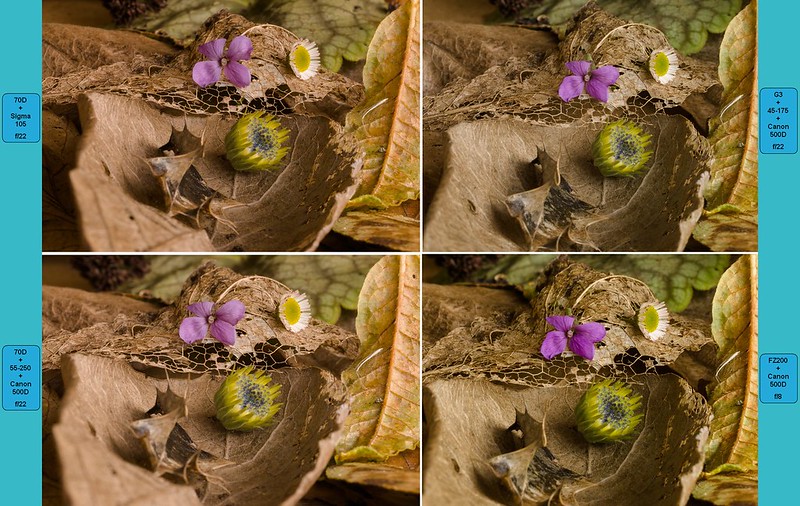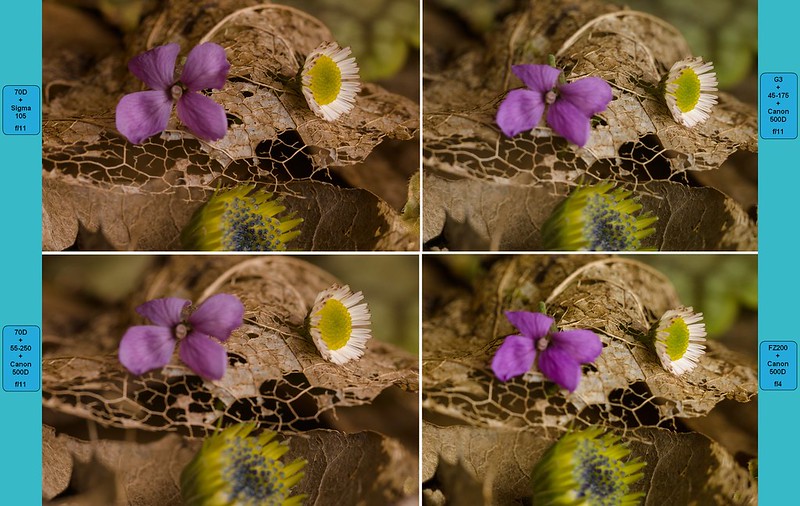I need to work out what kit to use for botanical work next season, almost all of which will be working with natural light. Before Christmas I decided to try some comparisons in carefully controlled conditions. I started by considering three options:
- The Sigma 105 Macro on the 70D
- Low powered achromats (Canon 500D and Raynox 150) on the 55-250 STM on the 70D
- Low powered achromats on the 45-175 on the G3
I collected some small flowers and some leaves and twigs from the garden. I usually do test shots in my study but this has a suspended floor and this ruins long exposure natural light shots of the type these comparisons would involve. So I arranged the subject matter on a table in the kitchen, which has a solid floor. The table was near a large window. It was the middle of the day, but heavily overcast.
I used a tripod and wired remote release. Image stabilisation was off. I tried to align the shots in the same way for each rig, but the G3 and the 70D have different aspect ratios so I could not capture identical shots. I attempted to make the vertical coverage of the scene the same for each rig, with the 70D shots then having some extra material on each side. I was not entirely successful with the alignments, but on reviewing the images I thought the alignments were good enough for my purposes.
I used manual focus, using the magnified view in live view. I took shots at three magnifications of 1:1 (in APS-C terms), 1:1.2 and 1:2. I took the shots first with the Sigma 105 on the 70D, setting the magnification on the barrel, and then tried to arrange the other shots by referring to the images created with the Sigma 105. Each shot had a small daisy in it, and I tried to focus on the same part of the daisy every time.
I tried to get the exposure level similar for each shot by adjusting the exposure compensation a little when a shot appeared to have drifted from the level I was working at. However, that didn't work very well and I had to apply additional exposure adjustments in post processing to bring the images to a better consistency of brightness.
I was interested in sharpness, dof, clarity, bokeh, colour rendition and noise. I took twelve sequences of shots:
70D+Sigma 105 at 1:1, ISO 100 at f/2.8 to f/22
70D+Sigma 105 at 1:1, f/14, ISO 100 to 12800
70D+Sigma 105 at 1:1.2, ISO 200, f/2.8 to f/22
70D+Sigma 105 at 1:2, ISO 400, f/2.8 to f/22
70D+55-250+Raynox 150 at 1:1, ISO 100, f/5.6 to f/22
70D+55-250+Raynox 150 at 1:1, f/14, ISO 100 to 12800
70D+55-250+Raynox 150 at 1:1.2, ISO 200, f/5.6 to f/32
70D+55-250+Raynox 150 at 1:2, ISO 400, f/5.6 to f/28
G3+45-175+Raynox 150 at 1:1 (APS-C equivalent), ISO 160 (G3 base ISO), f/5.6 to f/22
G3+45-175+Raynox 150 at 1:1, f/14, ISO 160 to 6400
G3+45-175+Raynox 150 at 1:1.2, ISO 200, f/5.6 to f/22
G3+45-175+Raynox 150 at 1:2, ISO 400, f/5.6 to f/22
The images were captured as RAW and imported into Lightroom using my standard import settings. None of the images has had any luminance noise reduction. The import settings include import sharpening, which is set slightly differently for 70D and G3 images (the G3 images being sharpened slightly more, but I checked the effect of adjusting a 70D image to the G3 sharpening and the effect was inconsequential – pretty much indiscernible actually, at 100% viewing.)
For the noise test sequences (the ones with varying ISO) I took one shot of each setting. For the other sequences I took three shots at each setting. I looked at several of these triplets and could not discern any difference between the shots, so I simply took the third shot from each sequence and used that.
Apart from the (very mild) import adjustments, the images had a camera profile applied and a white balance taken from a white card reference shot (separate reference shots for the 70D and G3).
As mentioned above, I made some alterations to the Exposure in Lightroom to try to even up the brightness as between shots in a sequence and between the various sequences so as to aid comparisons.
The images were exported from Lightroom, resized to a common height of 3448 pixels. This was the pixel height of the G3 images, the 70D images being 3670 pixels in height. The resizing was done to make like for like comparisons more meaningful at 100% or other magnifications. The images had no output sharpening. They were uploaded to
this album at Flickr.
I compared pairs and triplets of images and ran through sequences of images using Faststone Image Viewer. This let me pick pairs, triplets etc to work on and flick from one to the next of the selected images just using the arrow keys, keeping my eyes on the images, and I could do this with the images fitted to the screen or viewing 100%.
In this way I could do comparisons such as
- One image from each rig at 1:1.2, comparing the clarity, sharpness, colour etc looking at the whole image, and comparing sharpness and detail at 100%
- For a particular rig and magnification, running through the apertures to see how the dof and sharpness/detail changed
- For a particular rig, at 1:1 running through all the available ISO values to see how the noise characteristics changed with ISO
- Comparing the noise between rigs for a particular ISO
This produced some unexpected results, and after Christmas I decided to do another test run. I used the same technique, but this time I added a fourth rig – my FZ200 bridge camera, used with low power achromats. This time I captured all the shots at base ISO (ISO 100 for the 70D and FZ200, ISO 160 for the G3). I used four magnifications of 1:1, 1:1.5, 1:2 and 1:4. I obviously needed new material for the test scene, but I made it fairly similar to the scene used in the first run. In particular, it had a small daisy in all the scenes and I tried to focus on the same part of it for all the shots.
Here are the four test scenes from the second test run, as captured by the 70D and Sigma 105.
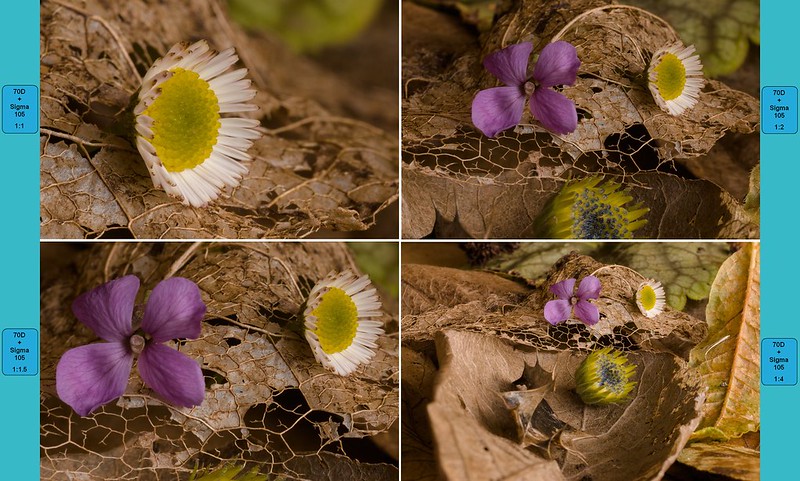
0644 5.01 Scene magnifications by
gardenersassistant, on Flickr
I used magnified view in live view for focusing for the 70D and G3, and also for the 1:1 shots for the FZ200, but after that I used autofocus for the FZ200 shots because manual focus proved too awkward and tiresome to be useful.
For the second run I used the same exposure compensation of -1/3 for every shot. On importing to Lightroom every shot had the same, mild, colour noise reduction and the same, mild sharpening, and no luminance noise reduction or output sharpening. I adjusted the Exposure of a few images which seemed much darker than the rest.
I created a camera profile for each of the four rigs using a Macbeth colour chart shot, and as well as applying the appropriate camera profile to each shot I set the white balance for each shot using the white square on the appropriate camera profile shot. I exported the images from Lightroom 3000 pixels high, which is the pixel height of the FZ200 sensor, the G3 and 70D having larger pixel heights.
The images from the second run (which includes the composite images in this and subsequent posts) are in
this album at Flickr.
It turned out that despite using camera profiles and white balance shots the colours were significantly different between the 70D on the one hand and the two Panasonic cameras on the other.
I saw that the Temp and Tint value set from the white balance shots varied between cameras (and between the 70D with the Sigma and the 70D with the 55-250). I tried using the same Temp and Tint values rather than camera-specific values, but even when I did this significant colour differences remained, as illustrated here.

0644 5.02 1to1 Equalised White Balance by
gardenersassistant, on Flickr
I am surprised, and disappointed, about this. I thought I had got colour issues sorted.

Anyway, on now to what I saw when I compared the images.
Continued in next post

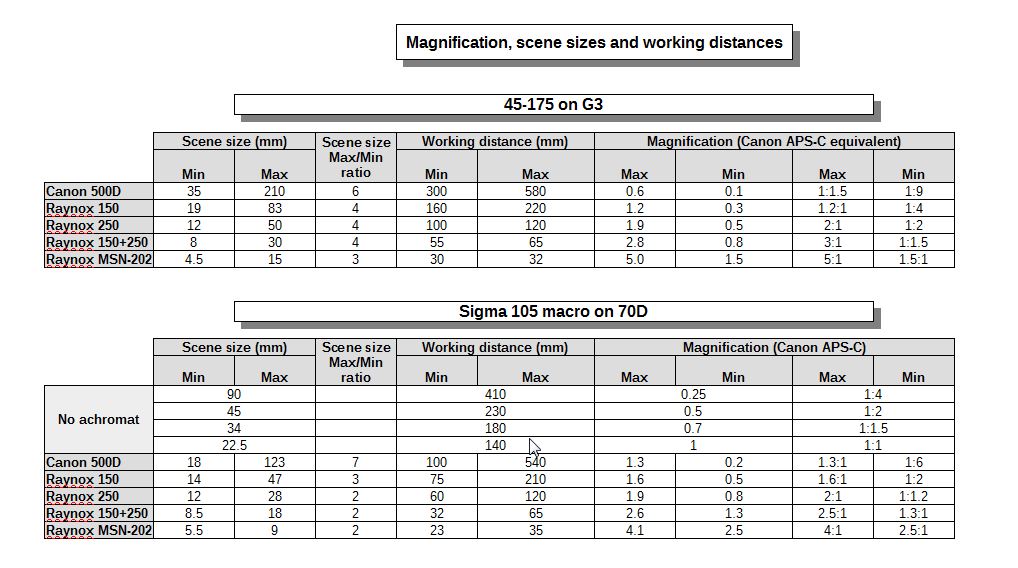


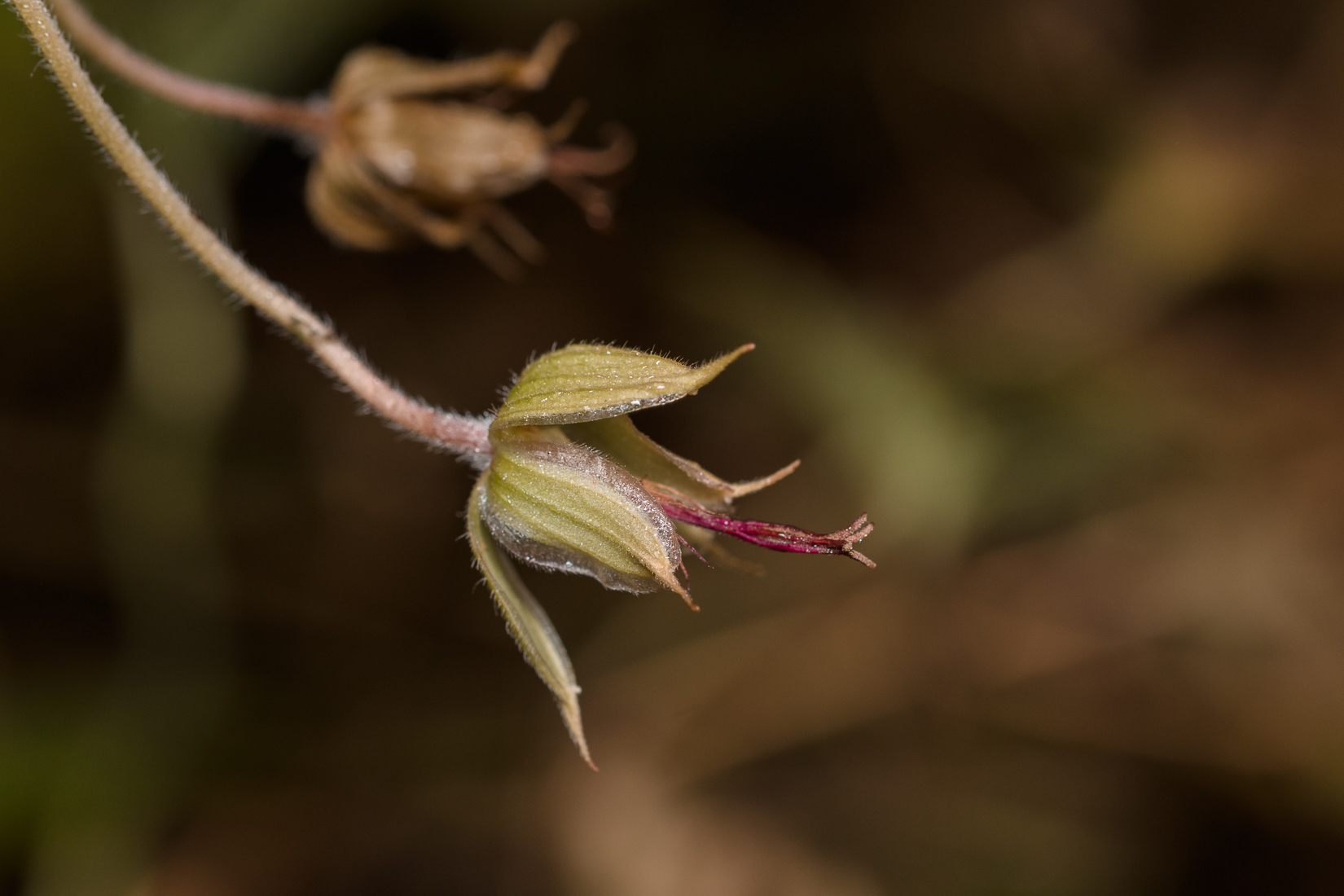
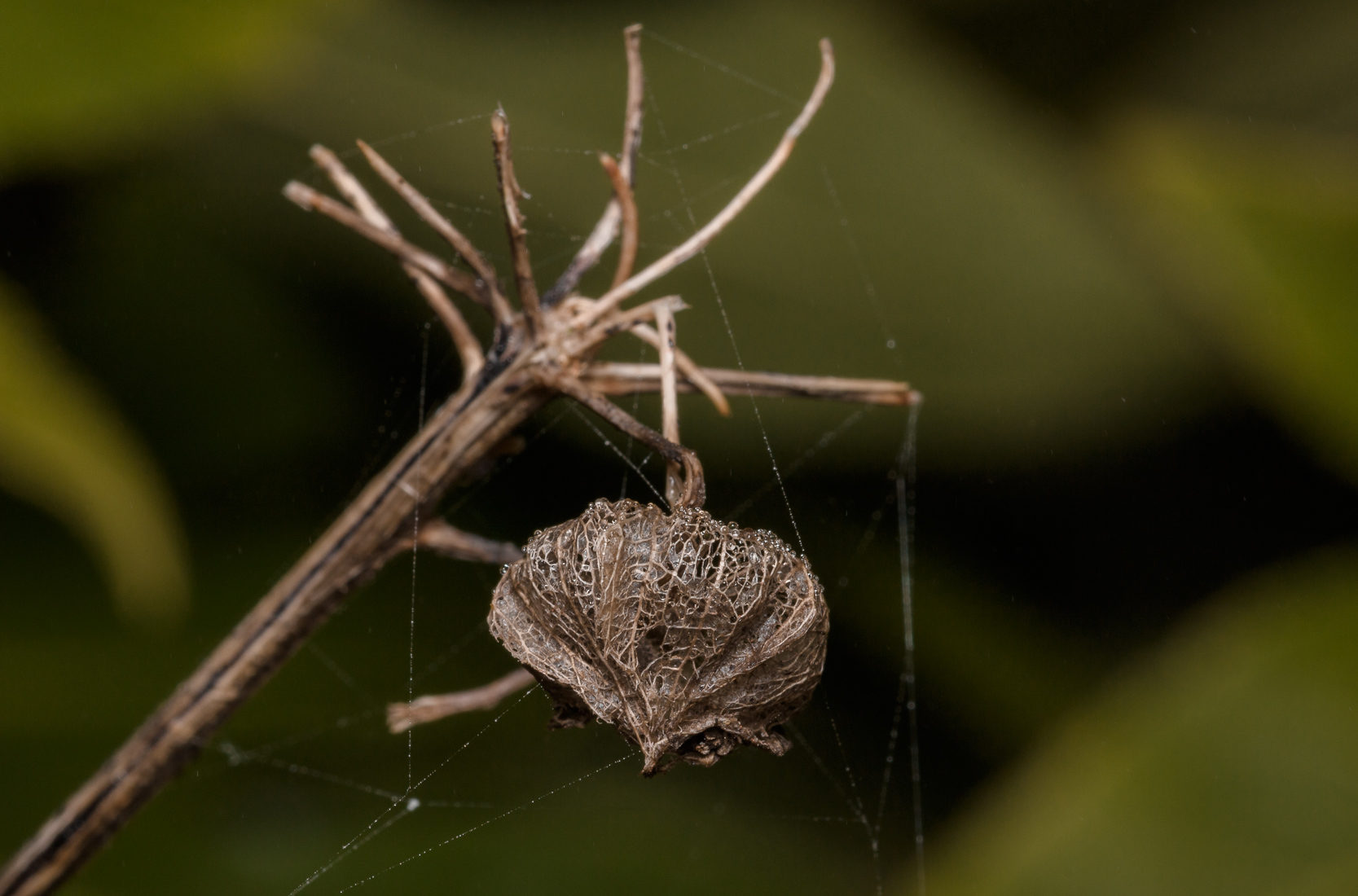
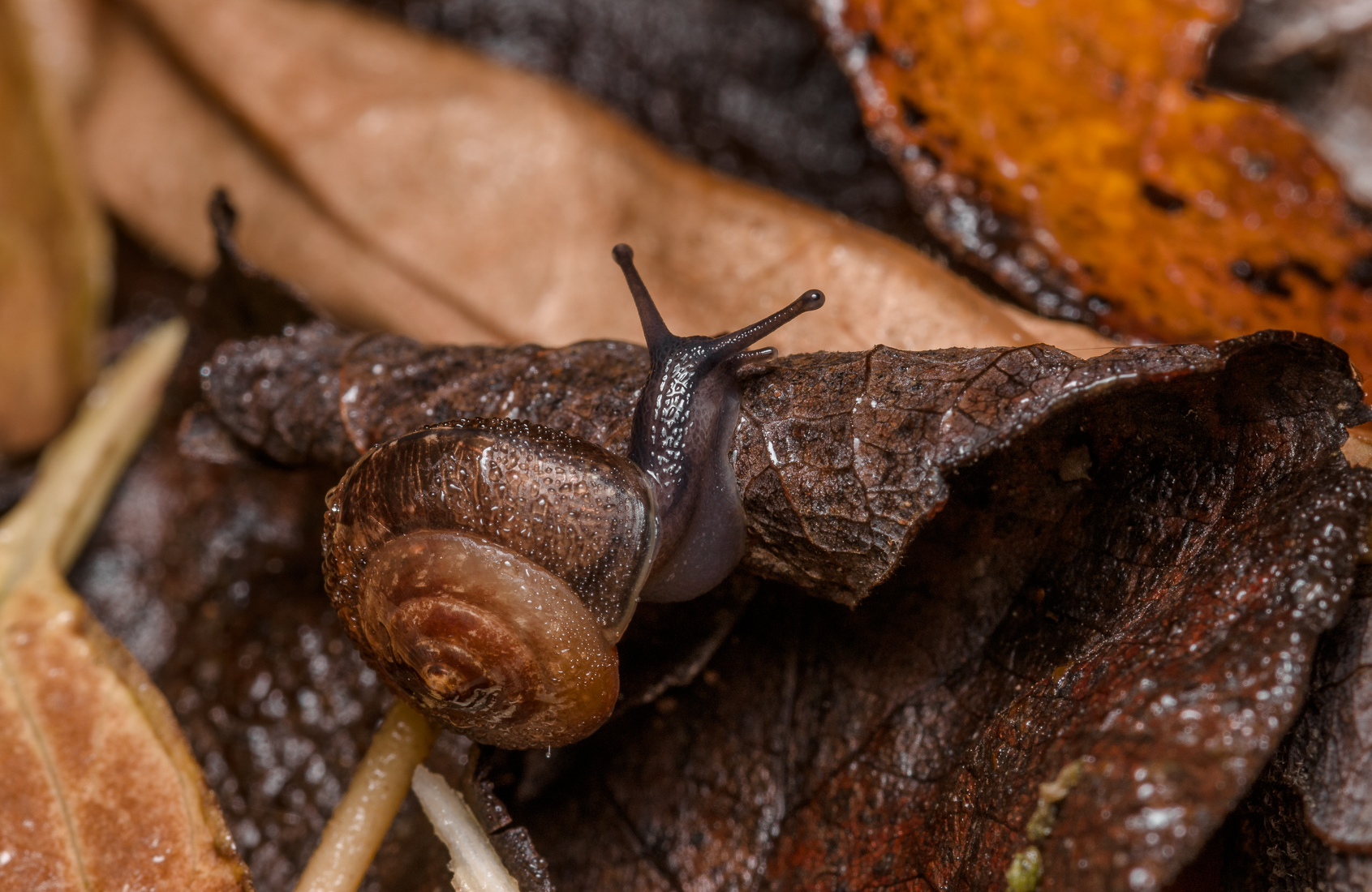


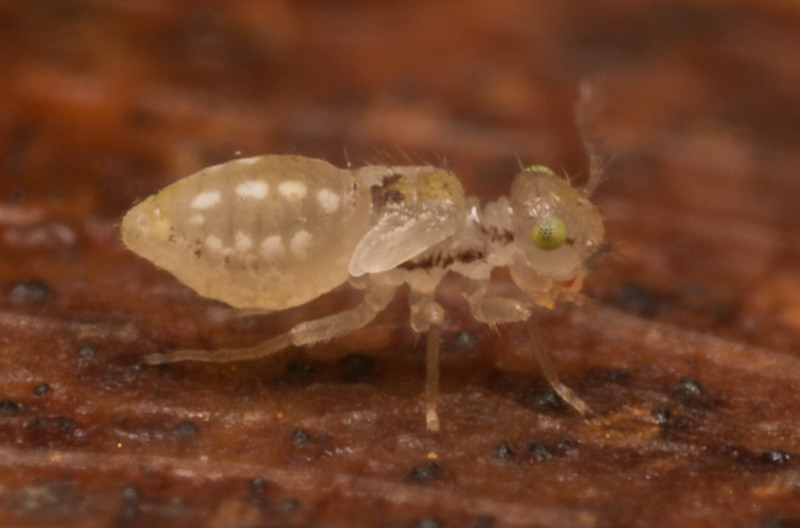
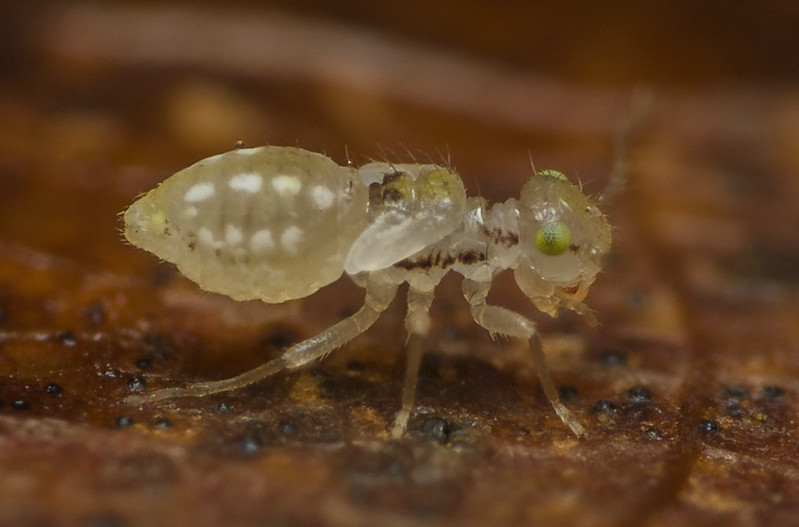
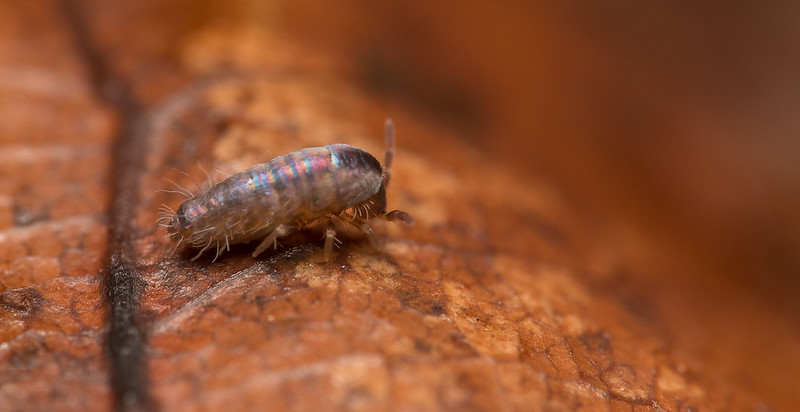
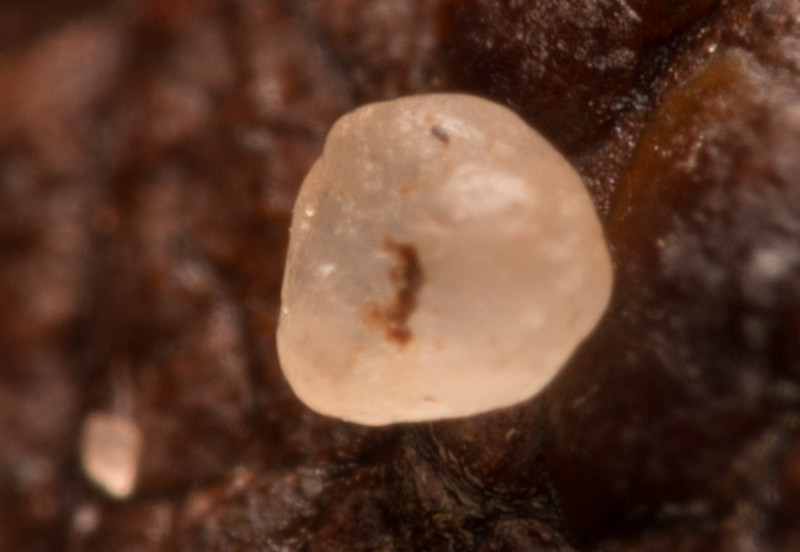



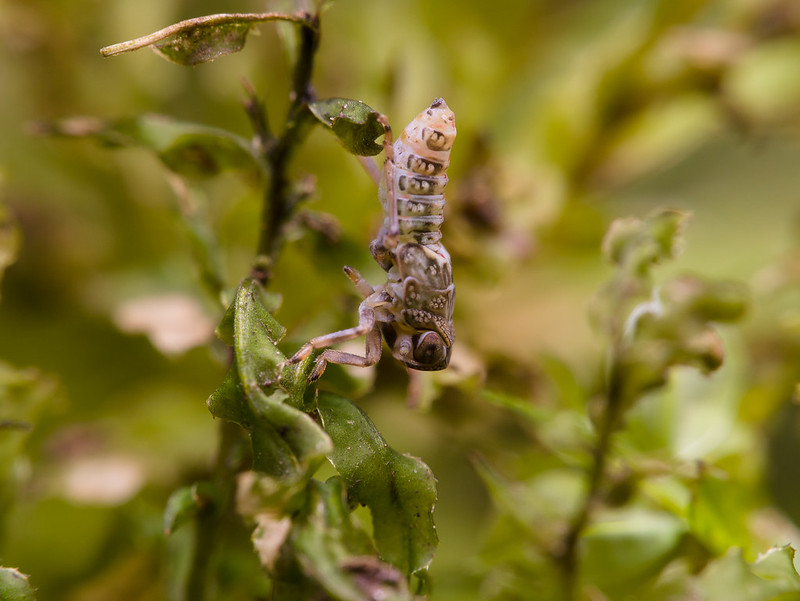
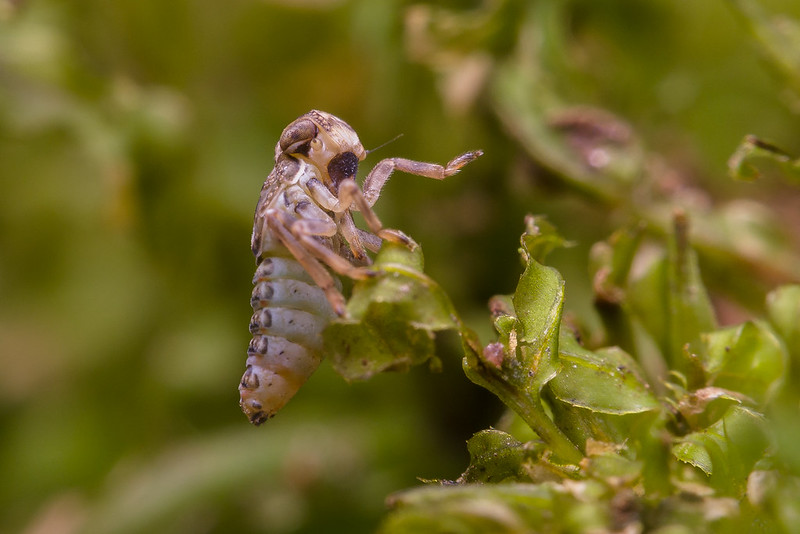
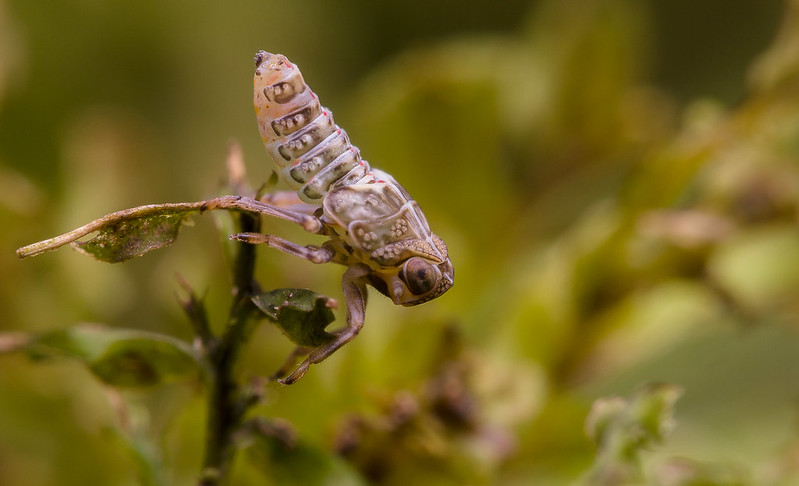
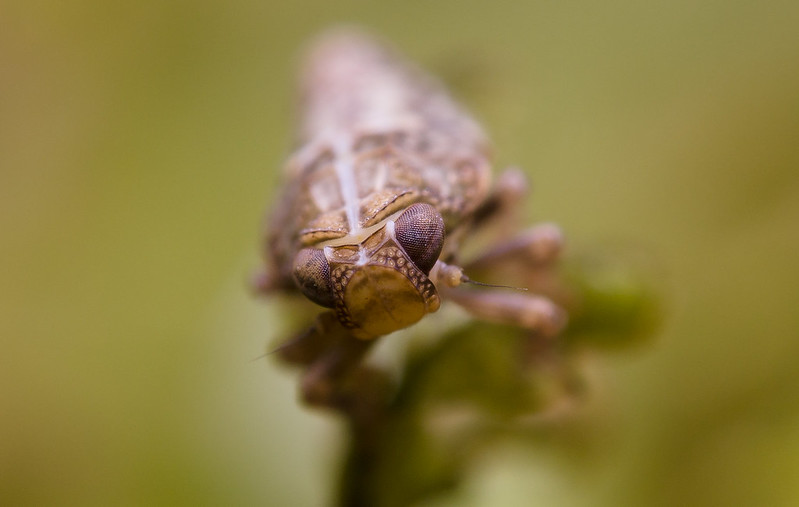
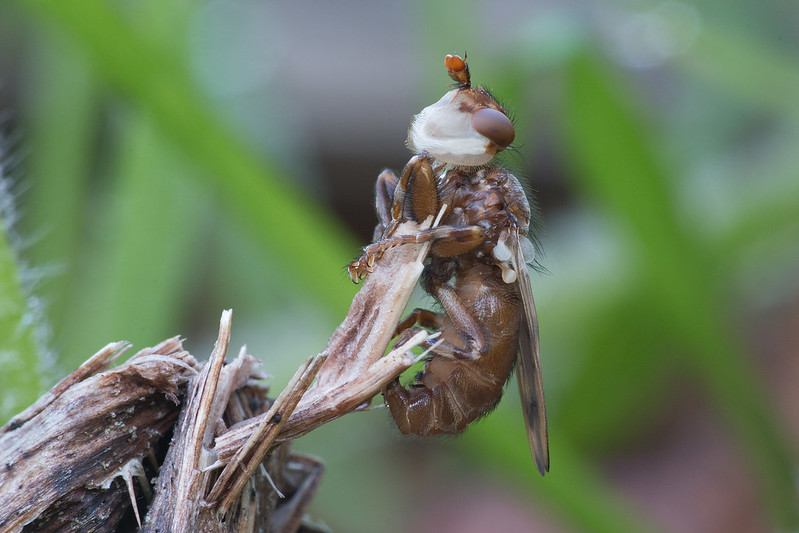



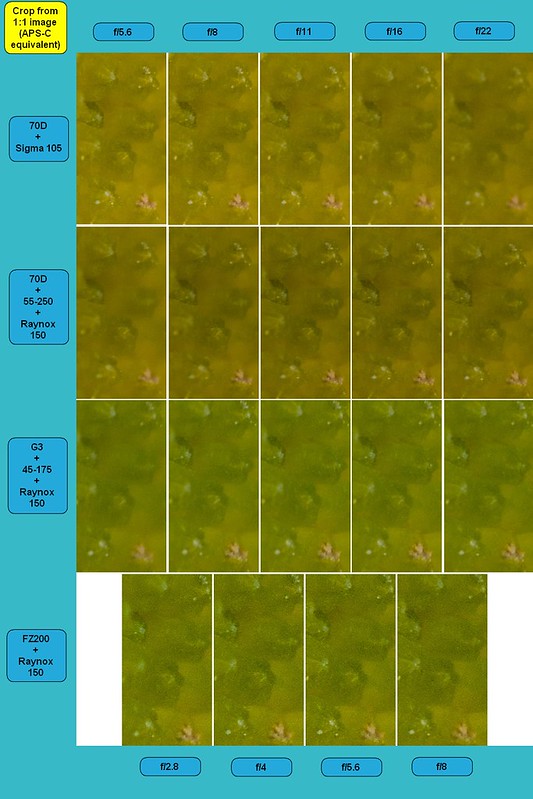
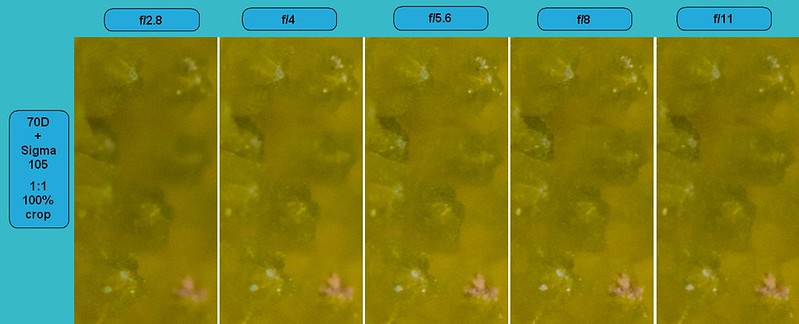
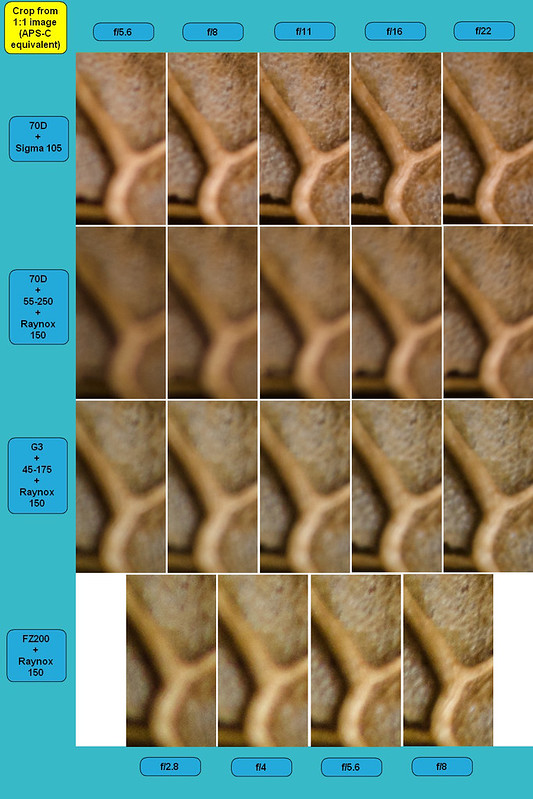
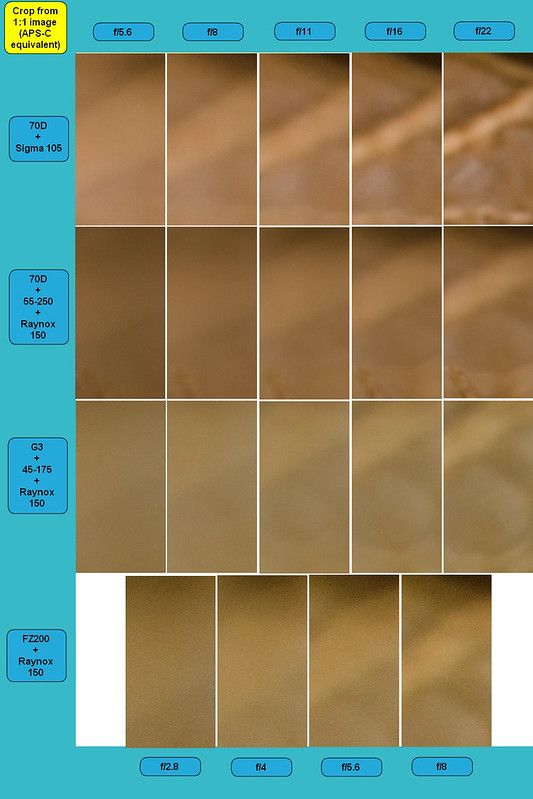
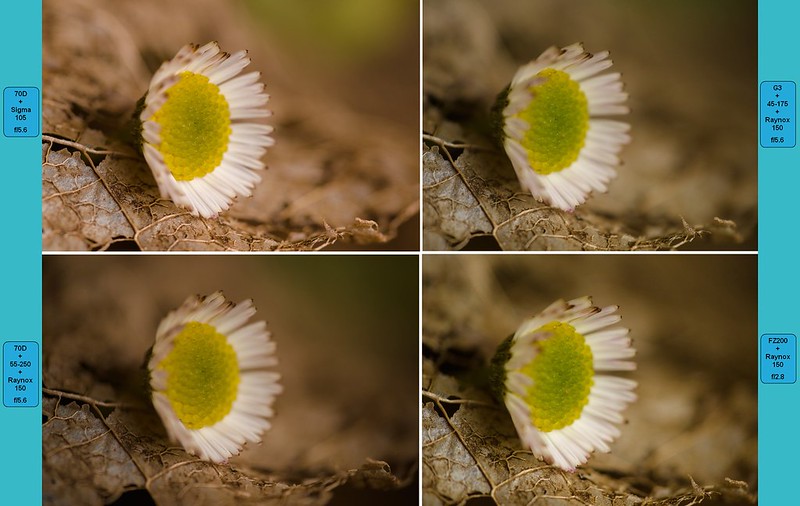
 0644 5.08 1to1 Small aperture comparison
0644 5.08 1to1 Small aperture comparison
